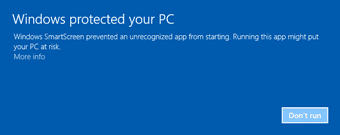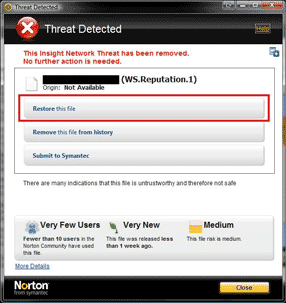FAQ
- I can’t get TypeIt to work at all!
- I want the TypeIt icon to be always visible on my taskbar.
- How can I make TypeIt start automatically?
- My anti-virus says that TypeIt is a possible threat.
- How do I quickly switch between keyboards?
- Can I use TypeIt in any application?
- When I type phonetic symbols, I get question marks or squares instead.
- What typing schemes does TypeIt offer?
- I have a non-US-English keyboard. Can I use TypeIt?
- When TypeIt is enabled, I cannot type important characters with the right Alt key!
- Can I do a silent install of TypeIt?
- What’s under the hood?
I can’t get TypeIt to work at all!
If you don’t know how to install TypeIt, or you believe you have installed it, but it isn’t working, please read the basic troubleshooting guide for non-techie users.
I want the TypeIt icon to be always visible on my taskbar.
The main way to switch languages in TypeIt is to click the ![]() icon in the notification area (bottom-right corner of the taskbar).
Unfortunately, Windows will always hide the notification icon for any new app. You can make the icon permanently visible by following these
simple instructions:
icon in the notification area (bottom-right corner of the taskbar).
Unfortunately, Windows will always hide the notification icon for any new app. You can make the icon permanently visible by following these
simple instructions:
On Windows 11:
- Right-click the taskbar.
- Click Taskbar settings.
- Click Taskbar corner overflow.
- Find
 TypeIt on the list and flip the switch on.
TypeIt on the list and flip the switch on.
On Windows 10:
- Click the Start button.
- Type “taskbar”.
- Choose Select which icons appear on the taskbar.
- Find
 TypeIt on the list and flip the switch on.
TypeIt on the list and flip the switch on.
On Windows 7:
- Click the ▲ icon in the bottom-right corner of the screen.
- Click the Customize... link.
- Find the
 icon in the list.
icon in the list. - In the menu next to the icon, choose Show icon and notifications.
How can I make TypeIt start automatically?
-
Click the
 icon in the bottom-right corner of the screen.
(If the icon is hidden, you’ll have to click the ︿ or ▲ or icon first.)
icon in the bottom-right corner of the screen.
(If the icon is hidden, you’ll have to click the ︿ or ▲ or icon first.)
- Click Options.
- In the dialog box, put a checkmark next to “Start TypeIt when I log on to Windows”.
- Click OK.
My anti-virus says that TypeIt is a possible threat.
Windows and/or your anti-virus software (e.g. Norton, Symantec, Avast) may display scary-looking warnings when you download TypeIt:


Why does this happen? Every time you download an app, these solutions check whether other users have downloaded it before. If an app has only been seen by a small number of users, it will be automatically classified as risky. This is more or less like saying: “I don’t know what this is, so I’ll assume it’s bad”.
Because TypeIt is not as widely used as, say, Photoshop, every time a new version of TypeIt comes out, it takes weeks before enough users download it to make anti-virus software recognize it as a legitimate app.
Another (less common) reason why some anti-virus software may view TypeIt as suspicious is that it intercepts your keystrokes, which is a behavior displayed by some types of malicious software – for example, some types of malware may hook into your keyboard to capture passwords. TypeIt needs to tap into your keyboard to detect your keystrokes, but does not store or transmit the text you type in any way.
What do I do?
- To work around Windows SmartScreen, click “More info”, then “Run anyway”.
- To work around Norton Security, please follow these official instructions from Symantec.
How do I quickly switch between keyboards?
One way is to set quick-access keyboards. TypeIt has three user-defined shortcuts – Alt + F2, Alt + F3 and Alt + F4. You can set each of these shortcuts to turn on a keyboard of your choice. To do so:
- Click the
 icon in the bottom-right corner of the screen.
icon in the bottom-right corner of the screen.
- Click Options.
- In the dialog box, choose which keyboard you would like to turn on when you press Alt + F2. If you like, do the same for Alt + F3 and Alt + F4.
- Click OK.
Another way is to simply use the Alt + Backspace shortcut, which lets you go back to the keyboard you used before. If you’re using the French keyboard, but you were using the Spanish keyboard before, pressing Alt + Backspace will turn on the Spanish keyboard again. If you press Alt + Backspace again, you will go back to the French keyboard again.
The third way is to press Alt + Shift + F1. This shows the main TypeIt menu. You can then use the mouse or arrow keys to select a keyboard. For extra speed, you can press a “menu accelerator” key, e.g. F for French, S for Spanish, I for IPA, etc.
Can I use TypeIt in any application?
TypeIt will work in any application that supports Unicode. Virtually all Windows applications released in the past 10 years (and many applications released earlier) support Unicode.
One minor exception is applications that are run as administrator. As a matter of security, Windows prevents “standard” apps from sending input to applications that have administrative privileges. (Note that it is very unusual to run applications as administrator – normally, only administrative tools like Registry Editor are run like this.)
When I type phonetic symbols, I get question marks or squares instead.
Please switch to a font which includes IPA phonetic symbols. On Windows 7 and higher, built-in fonts with good IPA coverage are Segoe UI, Cambria, Calibri, Arial, and Times New Roman.
What typing schemes does TypeIt offer?
TypeIt lets you type foreign characters using two basic methods:
- by holding the right-hand Alt key and pressing another key (once or more) – for example, in the French keyboard, Alt + E types é, Alt + EE types è, etc.
- by pressing a key and then tapping the right Ctrl key (by default) to modify it – for example, E followed by Ctrl types é, E followed by Ctrl Ctrl types è, etc.
Caps Lock as modifier key
The advantage of using Caps Lock as the “modifier key” is that it’s typically more easily accessible than the right-hand Ctrl key, which can lead to faster and more comfortable touch-typing. The loss of the Caps Lock key is likely to be a non-issue since most people use Caps Lock rarely, if ever. In my personal experience, Caps Lock is a key that hurts you more often than it helps you because it’s easy to turn on accidentally, which commonly leads to problems with typing passwords. So repurposing it to type foreign characters is likely to be a good trade.In general, method 2 tends to be easier on your fingers because you don’t have to hold down Alt while you press another key. However, the Alt method tends to be a bit faster on keyboards where you often have to type two or more special characters in a sequence, such as the IPA keyboards, because you can hold down Alt and type several special symbols in a row without having to tap Ctrl after every single one.
You can change the “modifier key” in method 2 from right Ctrl to Caps Lock (or you can enable both at the same time). To do so, use the Options window. If you do this, Caps Lock will lose its normal function. You can also disable both Ctrl and Caps Lock. If you do so, only the Alt-based input method will be available.
Finally, the Options window enables you to make Caps Lock work like Ctrl in all applications. If you do so, you will be able to type Caps Lock + C to copy, Caps Lock + V to paste, etc. This remapping is favored by some touch-typists because the Caps Lock key can often be reached with less strain than either Ctrl key.
I have a non-US-English keyboard. Can I use TypeIt?
TypeIt will work with all QWERTY and QWERTZ keyboard layouts. If your keyboard is not English (or a very similar layout like Polish), a small number of shortcuts like Alt + ' (Alt + apostrophe) or Alt + / may not be available. For example, in the German keyboard layout, the ' (apostrophe) key is replaced with Ä — the apostrophe doesn’t have a dedicated key.
In all such cases, TypeIt provides an alternative shortcut that you can use instead of the main shortcut. For example, if Alt + ' is unavailable, you can use Alt + 4 instead.
Other types of keyboards may not work with all the languages included in TypeIt. For example, on French/Belgian AZERTY keyboards and Dvorak keyboards, you can use all the languages included in TypeIt except Russian. You can work around this problem by switching to another keyboard layout (like US English) in Windows, which will effectively turn your AZERTY or Dvorak keyboard into a QWERTY keyboard.
Another possible issue comes from the fact that TypeIt will “take over” hotkeys with the right Alt key. If you rely on Alt–shortcuts to type important characters, please be aware that TypeIt will make it harder to type them. There are some workarounds (see next question).
When TypeIt is enabled, I cannot type important characters with the right Alt key!
TypeIt uses the right-hand Alt key as a modifier key for typing special characters. On some non-English keyboard layouts, Alt-hotkeys are normally used to type some important characters. For example, on the German layout, Alt + 0 (zero) types } and Alt + Q types @, both fairly common characters. These hotkeys will stop working when TypeIt is enabled.
To type one of these characters, you can do one of the following:
- Instead of pressing right Alt + key, press left Ctrl + left Alt + key (thanks to Detlev Hochmuth for suggesting this workaround)
- Press Alt + Enter to disable TypeIt, type your character, then press Alt + Enter again to re-enable TypeIt
- Switch to a keyboard layout in which typing the character doesn’t require pressing Alt
Can I do a silent install of TypeIt?
Yes. Simply run the installer from the command line with the /S option (that’s upper-case S). Just like with a regular install, you need to do this from an admin account or supply admin credentials.
What’s under the hood?
TypeIt is written in a modified version of AutoHotkey_L. (Thanks to Chris Mallett and the entire AHK community.) TypeIt itself is a proprietary, closed-source app, but the source code of the modified version of AutoHotkey_L can be downloaded here (ZIP file).
The TypeIt app is copyright ©2013–2020 by Tomasz P. Szynalski.
AutoHotkey_L is copyright ©2003–2010 by Chris Mallett, portions © AutoIt Team and the AHK community.